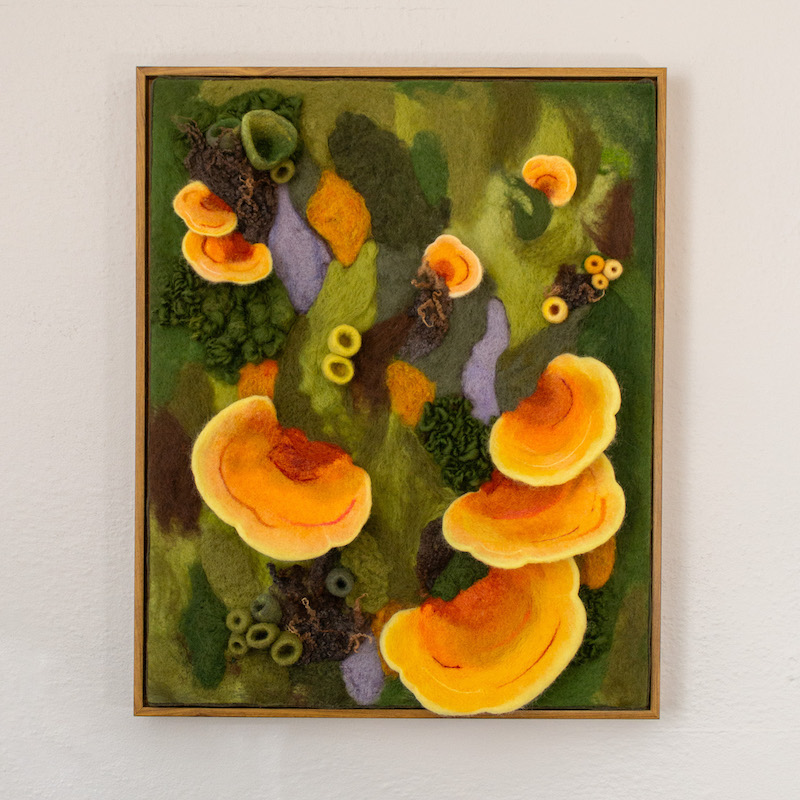
Harmony
I started writing a newsletter this year! Every Friday, I publish Orts: Threads of Creativity. Through it, I collect and share small snippets of creativity: embroiderers, textile artists, illustrators, DIY projects, and how we can make time for our creative endeavors. The name was inspired by orts—aka the thread trimmings you’ll have when embroidering and sewing.
One facet of Orts is a series called One Person, One Project, which explores an artist’s work via a single project. Fiber artist Amy Reader creates nature-inspired work that is colorful and joyful. Her pieces incorporate needle-felting and other textile art techniques. In a recent edition of Orts, she discussed her work having to do with “moss, lichen, and fungi-filled world of the forest floor,” and what it all means to her. I’m now publishing it here. If you’d like to get Orts when it’s published, subscribe here!
Amy has a bustling online community—and a Patreon—and is one of the artists featured in my upcoming book, Threads of Treasure: How to make, mend, and find meaning through thread. Read more about the book here.
Learn about artist Amy Reader’s fiber artwork inspired by the forest floor.
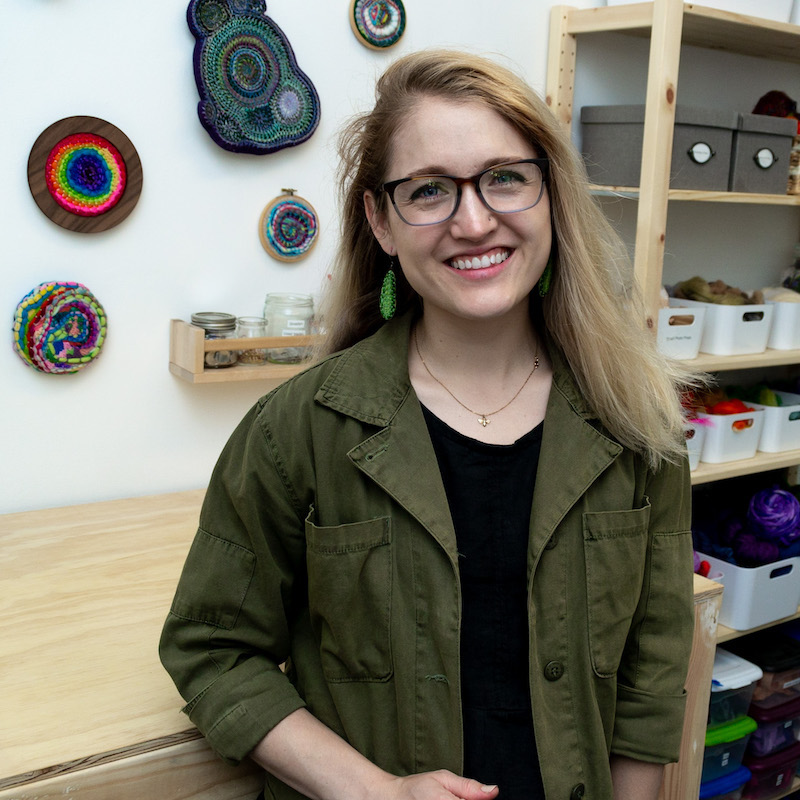
The project elevator pitch:
[Amy Reader] I’m developing a collection of dimensional wool paintings inspired by mushrooms, the forest floor, and the connectivity of nature. My work interprets how my brain processes different colors and textures found in nature and connects them to my experience of joy as an autistic artist.
What was the inspiration for the project?
Last year, I created an entire collection of work for a solo exhibition; during that time, I made a triptych called The Forest Floor Trio. That series of three was filled with my interpretation of the different textures and colors of the forest floor and how they feel to my brain. I remember thinking to myself after I finished those three that I could make one hundred more based on the same idea. However, that did not fit in with the plan for that particular show. Now that I have the time, I’m revisiting the moss, lichen, and fungi-filled world of the forest floor. I’ve long looked to these organisms as one component of inspiration among many. With the work I’m doing now, I’m narrowing in on what is still an incredibly vast, interconnected ecosystem that many of us rarely see in our day-to-day lives.
Whenever I make a new piece, I scroll through my mental index of all of my different encounters with nature that brought me joy. For me, joy is an intense, visceral feeling that is hard to communicate in words. Colors feel more vibrant, details feel larger, and I can hold those moments in my mind’s eye, spin them around, and zoom in on different parts. I can still hear the birds, feel the moss beneath my feet, and relive these moments. The best way I have to translate that memory is through my art and aiming to capture the technicolor sensation that is my own experience.
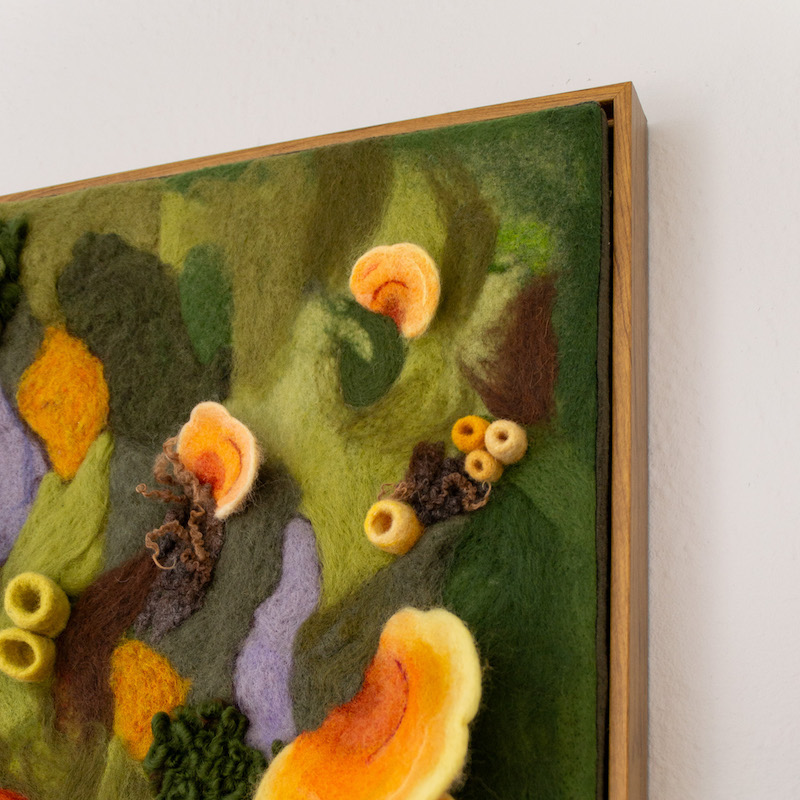
Harmony (detail)
I used to joke that I felt as though I really belonged in the trees. As I’ve become older, I realize how much that feels true to me. Because of my autism, the world is typically overwhelming to me. It bombards all of my senses, and it is exhausting to exist in most spaces. In the forest, I can breathe fully. I feel so deeply connected to our natural world and have always sought respite there. I’m bringing that sense of connectedness into my studio practice through this work.
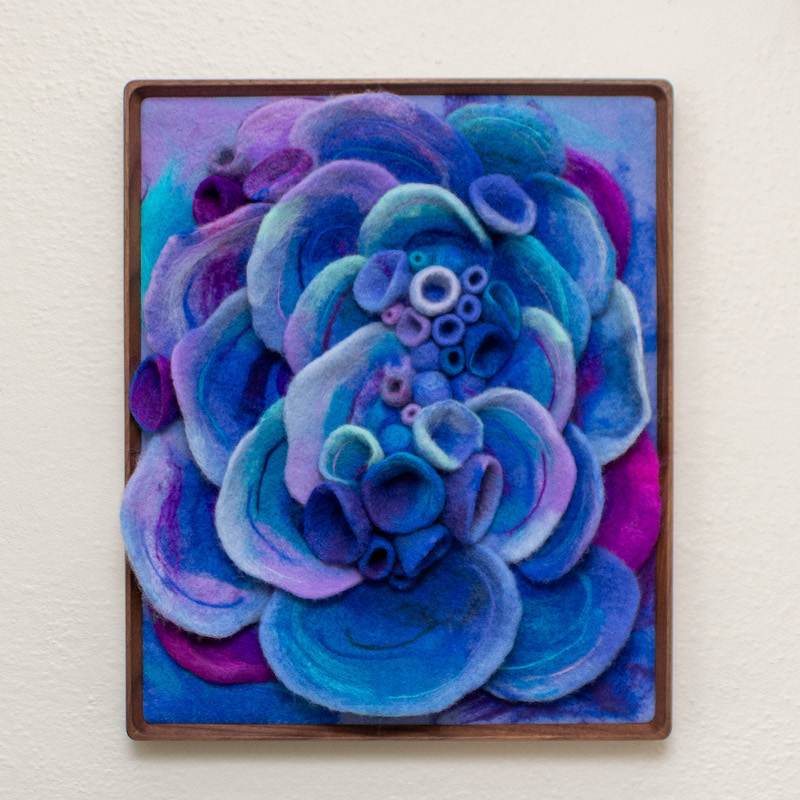
Symphony
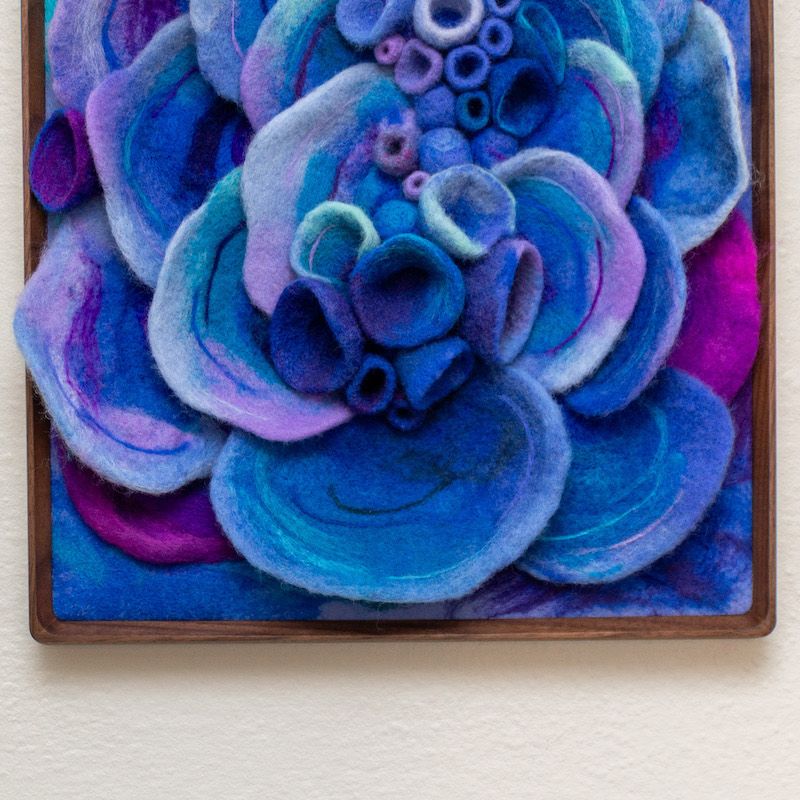
Symphony (detail)
What materials and methods are you using in making it?
Most of my work right now involves needle felting. I’m enjoying treating wool like I used to treat paint. I also use embroidery and beading to add texture and depth to many of my pieces. The majority of my work is backed on either felt or cotton. I’ve been experimenting with building out larger shapes with different infrastructures and using wool felt with roving felted on top to add dimension while retaining stability.
What obstacles are you facing with the project?
[My husband and I] moved cross country from Portland, OR, to Asheville, NC, at the end of 2023 to be closer to our families. I’m finally at a place where I do have a functional studio, but there is still work to be done. I have struggled to balance the last 10–15% of unpacking with my desire to make new work. That usually looks like I can either unpack or make work during the day, but not both. There are untouched boxes under my table and still in my closet. I am also settling into a new space and routine, so I am feeling how hard it is to be disconnected from my local artist community. Asheville is a beautiful, vibrant city filled with artists, and it has been hard to motivate myself to go out and engage in the community while we are still unpacking.
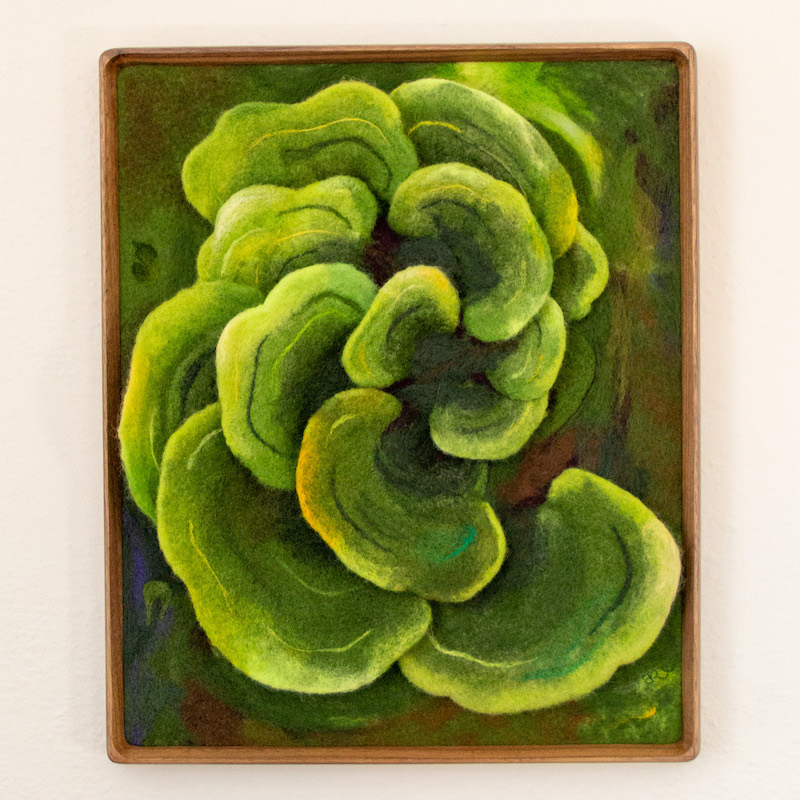
Euphony
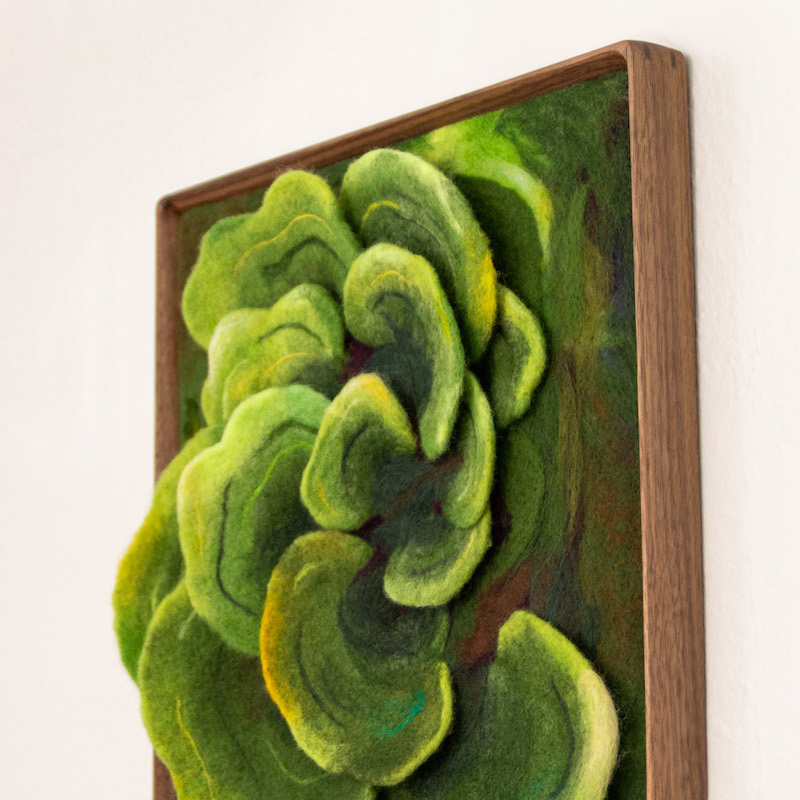
Euphony (detail)
What are you learning from it that will help in future projects?
Framing! I have long struggled with the best way to frame my pieces. All of my fiber work until this collection has been circular and framed in some sort of wooden circle. These are the first pieces I’ve framed in conventional rectangular and square frames. It felt almost illegal to my art practice to deviate from my beloved circles, but it has been so delightful instead. I’ve learned how to make conventional frames work for my dimensional fiber pieces! I feel like I’m continuing to unlock new ways to show my work in its best light, and I love it.
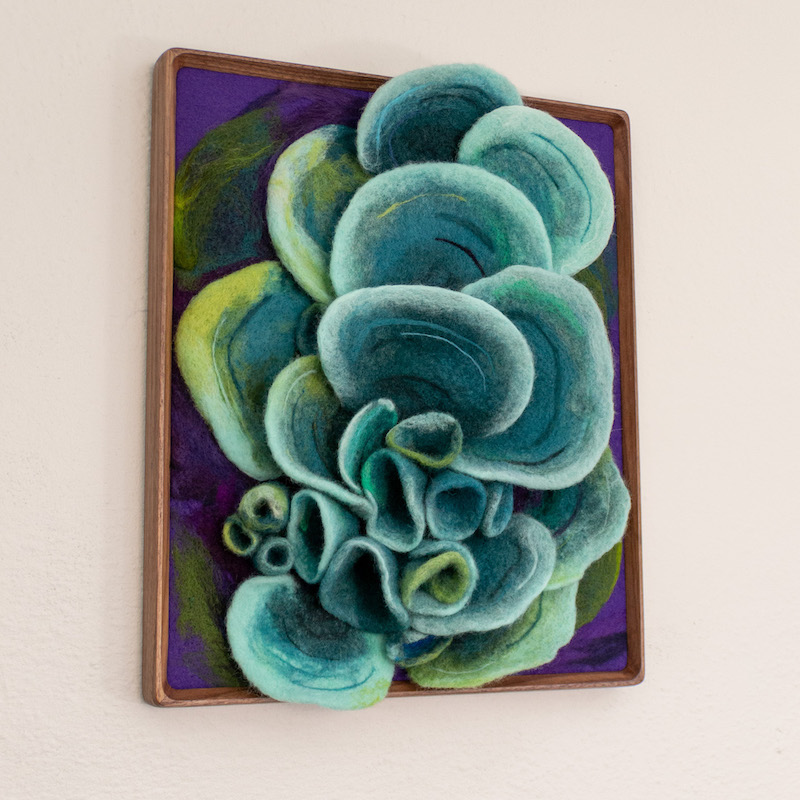
Aria
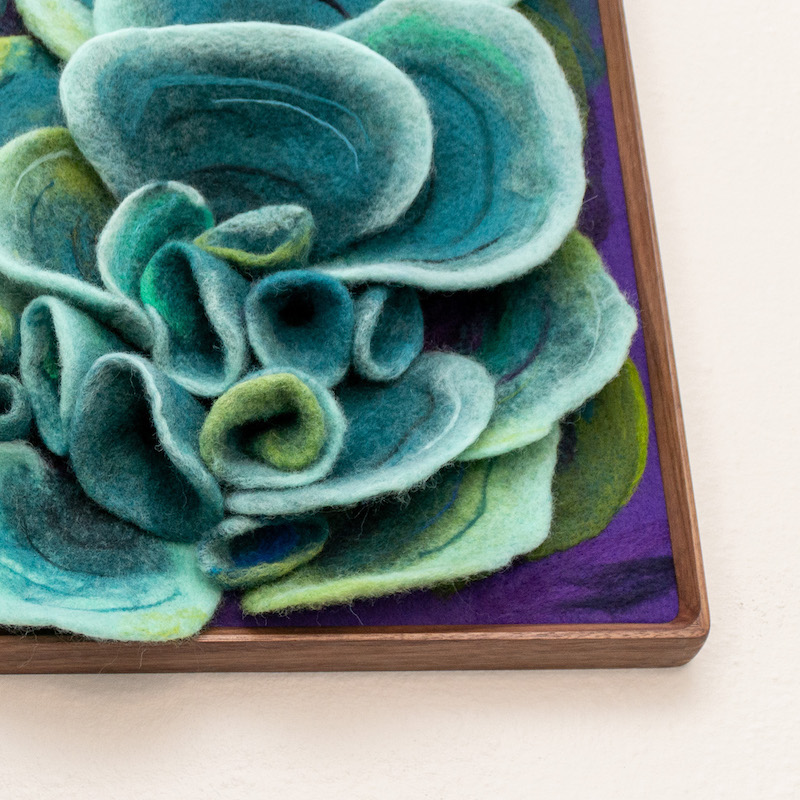
Aria (detail)
